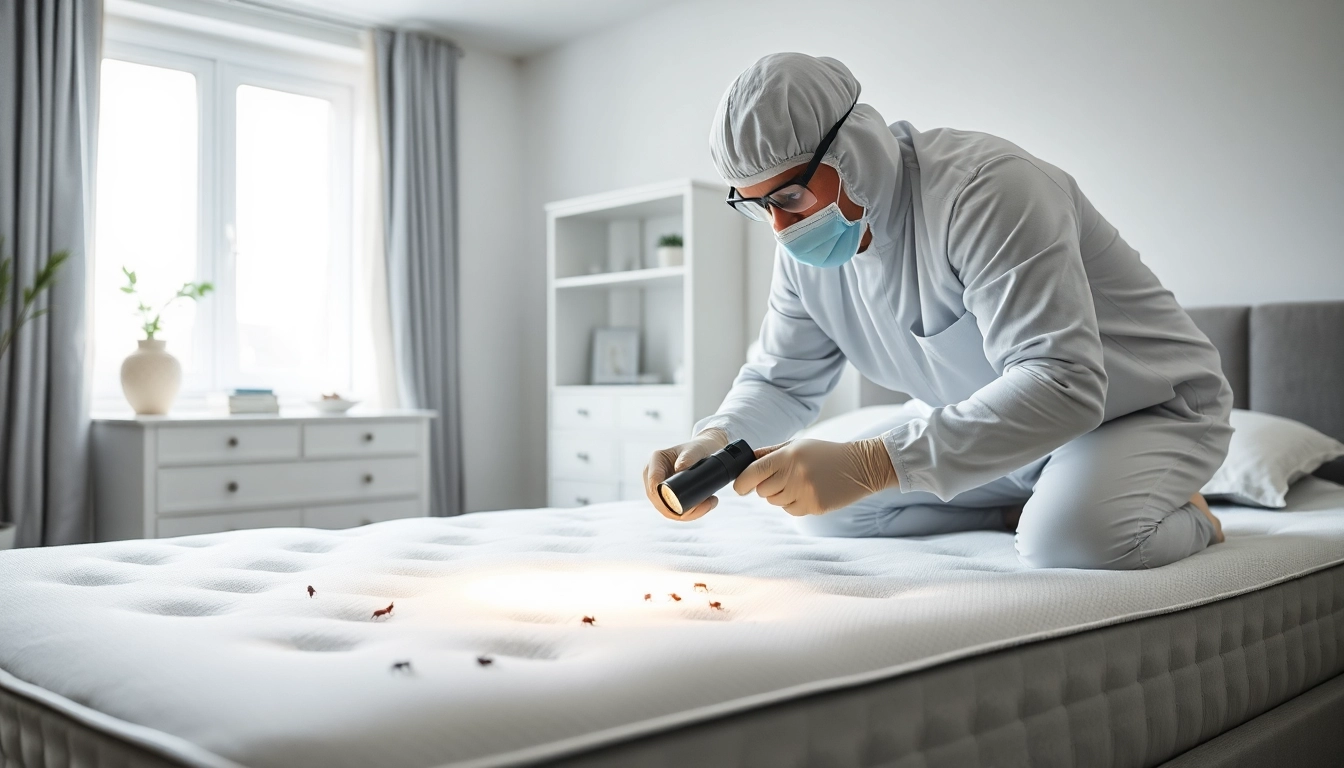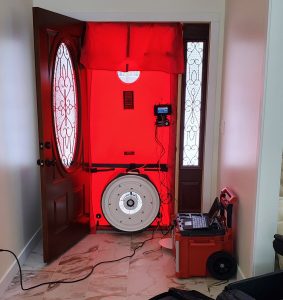Effective Bed Bug Pest Control Strategies for a Pest-Free Home
Understanding Bed Bug Infestations
What Are Bed Bugs?
Bed bugs, scientifically known as Cimex lectularius, are small, nocturnal insects that primarily feed on human blood. They are approximately 1/4 inch long, flat, oval-shaped, and have a reddish-brown color. Bed bugs are notorious for their ability to reproduce rapidly; a single female can lay between 200 to 500 eggs in her lifetime. These pests are often found in various places, including apartments, hotels, and homes, especially in areas where people frequently rest, which is why they are commonly associated with bedding.
Signs of Bed Bug Infestation
Identifying a bed bug infestation early is crucial for effective pest control. Common signs include:
- Bite Marks: Bed bug bites often appear in clusters or lines on the skin and are usually itchy.
- Exoskeletons: After molting, bed bugs leave behind their shed skins.
- Fecal Stains: Dark stains on sheets or mattresses can indicate bed bug feces, which is digested blood.
- Eggs and Eggshells: These tiny white eggs, approximately 1mm in size, can be found near hiding spots.
- Allergic Reactions: Some individuals may exhibit allergic reactions to bed bug bites, leading to rashes or hives.
Common Myths About Bed Bugs
Myths surrounding bed bugs can hinder effective control and prevention. Some common myths include:
- Myth 1: Bed bugs are only found in dirty places. Truth: Bed bugs can inhabit even the cleanest of spaces, as long as there are sufficient people to feed on.
- Myth 2: Bed bugs transmit diseases. Truth: While bed bugs can cause discomfort and anxiety, they do not transmit diseases like other pests (e.g., mosquitoes).
- Myth 3: You can only get bed bugs from hotels. Truth: Bed bugs can be picked up from a variety of places, such as public transportation, second-hand furniture, or even visiting friends.
Bed Bug Pest Control Techniques
Integrated Pest Management Solutions
Integrated Pest Management (IPM) provides a comprehensive approach to dealing with bed bugs. It combines a variety of methods and practices to minimize the use of pesticides while effectively controlling bed bug populations. A successful IPM strategy will involve:
- Prevention: This includes sealing cracks and crevices, removing clutter, and minimizing places where bed bugs can hide.
- Monitoring: Periodic inspections using bed bug interceptors can help detect early signs of infestations.
- Response: When an infestation is confirmed, a multi-faceted response is necessary, including both non-chemical and chemical treatments.
Heat and Chemical Treatments
Two widely used treatment methods for bed bugs are heat treatments and chemical applications. Each method has its advantages and disadvantages:
- Heat Treatments: This method involves raising the temperature of infested areas to levels lethal to bed bugs (around 118°F/48°C) for a sustained period. This method is effective in reaching insects hidden in various environments but requires professional equipment and expertise.
- Chemical Treatments: Various pesticides can be used to eliminate bed bugs. These include pyrethroids, neonicotinoids, and insect growth regulators. While effective, these chemicals must be used with caution and according to label instructions to avoid health risks.
DIY Methods for Bed Bug Removal
For minor infestations or supplemental treatments, several do-it-yourself (DIY) methods can be effective. These methods include:
- Heat Treatment: For small items, putting clothes or bedding in a dryer on high heat for 30 minutes can kill bed bugs.
- Cold Treatment: Exposing infested items to freezing temperatures for at least four days can also effectively kill bed bugs.
- Vacuuming: Regular vacuuming can help reduce bed bugs and their eggs. Be sure to dispose of the vacuum bag immediately outside the house.
- Cedar oil or essential oils: Although these methods might offer temporary relief, their effectiveness is not guaranteed and should be paired with comprehensive strategies.
Preventative Measures for Bed Bug Infestations
How to Protect Your Home
Preventing bed bug infestations is critical for avoiding the stress, expense, and time involved in treatment. Key preventative measures include:
- Regular Inspections: Periodically check beds, linens, and any upholstered furniture for signs of bed bugs.
- Protective Covers: Using mattress and box spring encasements can help keep bed bugs at bay while making the inspection and cleaning of bedding easier.
- Seal Cracks and Crevices: Caulking and sealing any gaps in walls, baseboards, and furniture can significantly reduce potential hiding spots for bed bugs.
The Role of Professional Inspections
Engaging a professional pest control service for regular inspections can be beneficial, especially in high-risk areas. These professionals can identify potential hotspots for infestation that may be overlooked by homeowners.
Safe Travel Practices to Avoid Bed Bugs
Travelers should take precautions to avoid bringing bed bugs home. Some tips include:
- Inspect Your Hotel Room: Upon arrival, check the bedding and luggage racks for signs of bed bugs before settling in.
- Keep Luggage Elevated: Use luggage racks and keep suitcases off the floor and beds.
- Launder Clothes: Immediately wash and dry clothes on high heat when returning from a trip.
Evaluating Bed Bug Pest Control Services
Choosing the Right Exterminator
Selecting a pest control company requires careful consideration. Important factors include:
- Licensure and Certification: Ensure that the exterminator is licensed and certified in pest control and specifically trained in bed bug treatments.
- Reputation: Research reviews and ask for referrals to gauge the contractor’s reliability and effectiveness.
- Methods Used: Inquire about the methods the company uses, whether they consider an IPM approach, and if they provide follow-up services.
Cost Factors for Bed Bug Treatment
The cost of bed bug treatment can vary significantly based on several factors:
- Infestation Severity: Larger and more severe infestations typically lead to higher treatment costs.
- Property Size: The size of the property will also affect treatment pricing.
- Type of Treatment: Heat treatments tend to be more expensive than chemical treatments due to required equipment and expertise.
What to Expect During Treatment
Understanding the treatment process helps homeowners prepare adequately. Typically, the procedure includes:
- Initial Inspection: The exterminator will conduct a thorough inspection of the property to assess the extent of the infestation.
- Preparation Instructions: Homeowners may be given specific instructions on how to prepare the home before treatment, such as clearing clutter and removing bedding.
- Treatment Execution: This phase could involve various techniques depending on the pest control strategy employed.
- Follow-Up Visits: Follow-up inspections and treatments may be necessary to ensure complete eradication.
Aftercare and Monitoring
Post-Treatment Bed Bug Monitoring
After treatment, continued vigilance is essential. Homeowners should monitor for signs of bed bugs for several weeks following treatment. Using bed bug interceptors under bed posts can help detect any remaining bugs.
How to Ensure Long-Term Control
Maintaining a bed bug-free home requires ongoing attention. Strategies for ensuring long-term control include:
- Regular Cleaning: Maintain cleanliness, vacuum regularly, and launder bedding frequently.
- Continued Vigilance: Regularly check areas where bed bugs were previously found.
- Community Awareness: Stay informed about bed bug outbreaks in your community, as these pests can travel between homes.
Resources for Ongoing Education
Educating yourself and your family about bed bug behavior, potential risks, and treatment options is vital. There are numerous online resources, including guides from health departments and pest control associations, where you can learn more about effective Bed bug pest control strategies and stay updated on the latest best practices.














Post Comment